#Gestalt principles
Explore tagged Tumblr posts
Text
Gestalt Principles | FusionCharts
An image can come to life by applying Gestalt concepts, analytical patterns, and pretensive qualities. Additionally, the Gestalt principles enable us to emphasize fundamental patterns while minimizing noisy ones when designing visualizations. Gestalt principles explain how our brain combines together various visual components to make sense of the complete image.
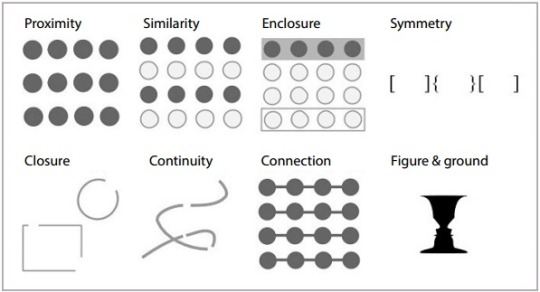
1 note
·
View note
Text

a nosferatu gets Blasted
#hehe. self portrait#the assignment was to do a charcoal (in my case graphite) portrait on top of multiple textured surfaces#since graphite cant go super dark i went with a theme of light#but i didnt wanna do anything soft and fuzzy. so i did vampire#i think the textures lend themselves nicely to looking diseased/burning#and i <3 the gestalt principle of closure!#graphite drawing#traditional art#art homework#art college#vampire#black and white#greyscale#pencil#artists on tumblr
8 notes
·
View notes
Text
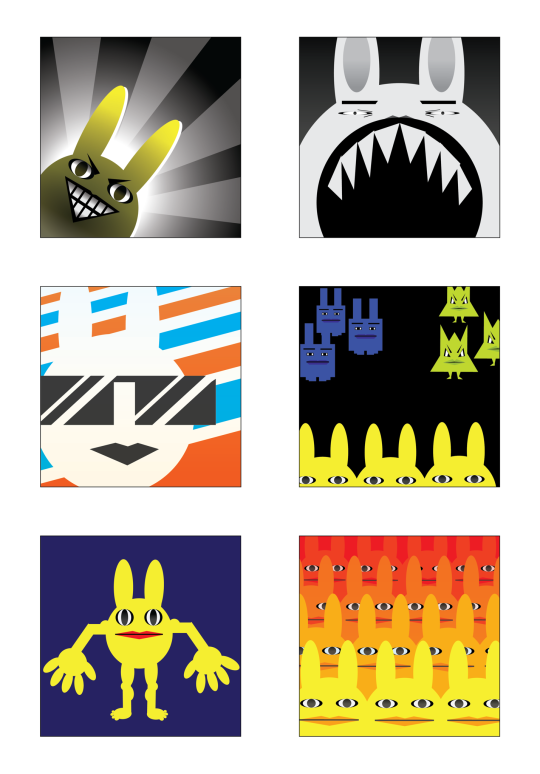
these beasts were my final for my graphic design class… i take college very seriously
4 notes
·
View notes
Text
I think the failure on many people's argument against AI art is that they forget when photography was invented they said manual art was over too. If anything, actually, we landscape photographers at the moment are more endanger by the rise of AI than manual artists.
#like. as a graphic designer I feel the problem with ai art is more 'it has unethical sources and the industry pretends to use it to replace#human people' rather than. havin a computer make images for you is inherently bad.#i still often avoid using AI. i feel like we're losing so much humanity that comes from human experiences because of AI.#like fundamentally the machine is only copying what already exists. it can hardly create pictures based on human experience.#maybe you could train it to have a basic understanding of psychological factors on an image such as gestalt principles but it probably#won't ever be accurate
5 notes
·
View notes
Text
Local faggot forced to use brain to think about brian. 372 dead 6582 injured
#🟧 orange bitch posting!!#urghrgh psychology......#its so interesting but not at 8:20 IN THE MORNING#not when the Kin Thoughts start hitting and I have to ignore them to fuckin. remember what a gestalt principle is#school posting
0 notes
Text
Word List: Psychology

more psychological concepts as reference for your poem/story
Telepathic dream - a dream in which one appears to gain insight or information about a person or event despite not having access to the relevant information in waking life; described by Sigmund Freud.
Thought echoing - (or écho des pensées) an auditory hallucination in which an individual hears their own thoughts repeated in spoken form.
Trait rumination - a tendency to focus attention on negative thoughts and emotions, which is associated with longer and more severe episodes of depression or anxiety.
Twilight state - a state of clouded consciousness in which the individual is temporarily unaware of their surroundings, experiences fleeting auditory or visual hallucinations, and responds to them by performing irrational acts, such as undressing in public, running away, or committing violence. The disturbance occurs primarily in temporal lobe epilepsy, dissociative reactions, and alcohol intoxication. On regaining normal consciousness, individuals usually report that they felt they were dreaming and have little or no recollection of their actual behavior.
Universality of emotions - the finding that certain emotional expressions, appraisals, and manifestations are the same or highly similar across cultures and societies.
Waking dream - an episode of dreamlike visual imagery experienced when one is not asleep. The term is sometimes applied to hallucinations, religious visions, and the like.
Windmill illusion - an illusion of motion of rotating objects, such as windmills and automobile wheels, which appear to reverse direction intermittently.
Xenoglossy - in parapsychology, the ostensible ability of a person to speak or write in a language that is entirely unknown to them.
Yantra - a visual pattern on which attention is focused during concentrative meditation.
Zeigarnik effect - the tendency for interrupted, uncompleted tasks to be better remembered than completed tasks. Some theorists relate this phenomenon to certain gestalt principles of organization but at the level of higher mental processing (e.g., memory), rather than at the level of pure perception; described in 1927 by Bluma Zeigarnik.
Source ⚜ More: References ⚜ Part 1 2 3 4 5 ⚜ Writing Resources PDFs
#writing notes#psychology#character development#writeblr#dark academia#spilled ink#literature#writers on tumblr#writing reference#writing prompt#poets on tumblr#poetry#creative writing#novel#lit#light academia#writing ideas#writing inspiration#character building#dante gabriel rossetti#writing resources
395 notes
·
View notes
Note
Hi, I found your work on Twitter last year and I really love and look up to your art. If you have the time, I wanted to as if there are there any study topics, artists or techniques that have significantly influenced you :')
I'm at a bit of a complete loss on what to study presently so I thought I'd ask my favorite artists, thank you for reading and I completely understand if this is too open ended a question
Thank you!
This isn't the first time I have been asked this question and I suspect this won't be the last so I'll just lay everything out here. Go to a cafe or get a blanket or something because this will not be a short read:
Foundational:
Anatomy: A lot of my foundational anatomy and clothing illustration knowledge was gained from taking classes and doing observational drawing. Because of this, I'm not going to have the best book recommendations but top 2 books I can recommend for getting Started started are Andrew Loomis or RockHe Kim's books on anatomy (huge asterisk here: they're good at teaching you Basics basics like muscle groups and turning forms and extremely general proportions but will not help that much with making your figure drawings less stiff or how to draw fat or especially in the latter's case how to draw women not built like stick bug anime girls but uh I heard the Morpho books are pretty good. genuinely everything I know about drawing fat is from observational drawing/studies because at some point I got sick of my school for only hiring skinny models in their 20s-30s). I have some diagrams drawn by my friend who studied the hell out of these guys below:

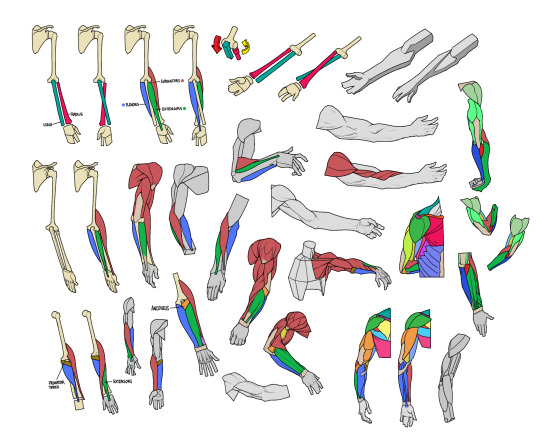


Clothing: I don't know any books that can really help on this front I apologize if I find any I'll update this post but pretty much all of my knowledge on drawing clothes boils down to the following rules: Where are the tension points, how stiff or soft is the textile, how is the form underneath the section of clothing behaving, and don't make even spaces between fold groups
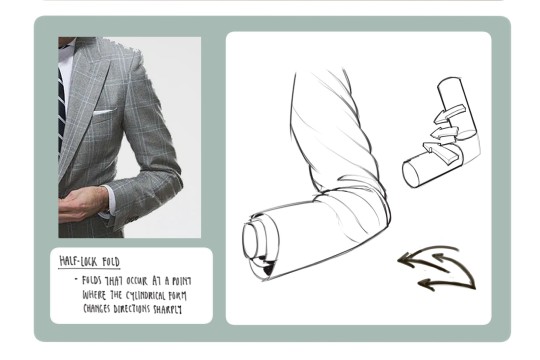
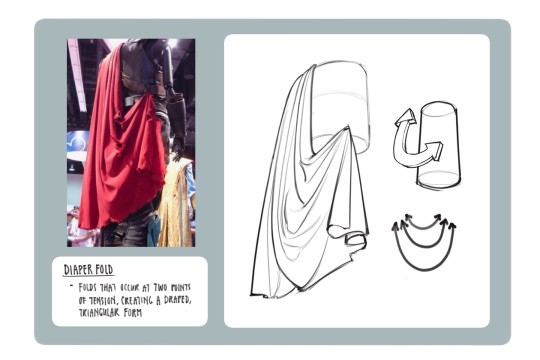
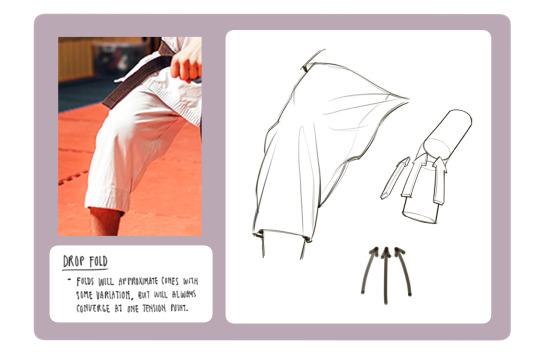
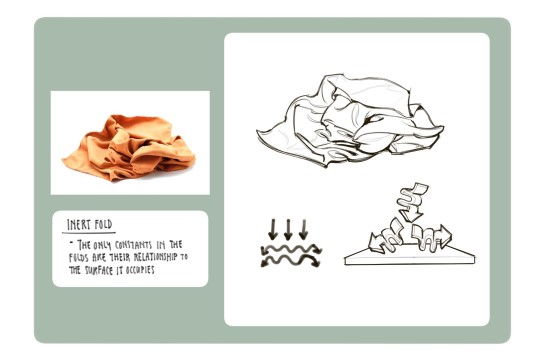
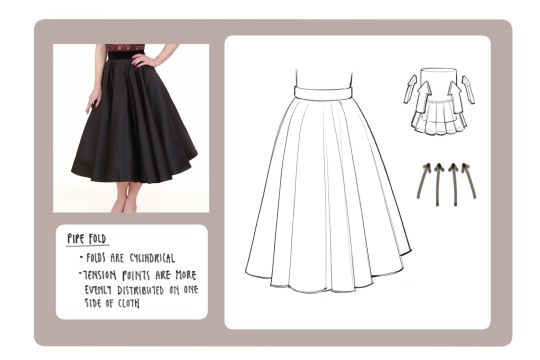
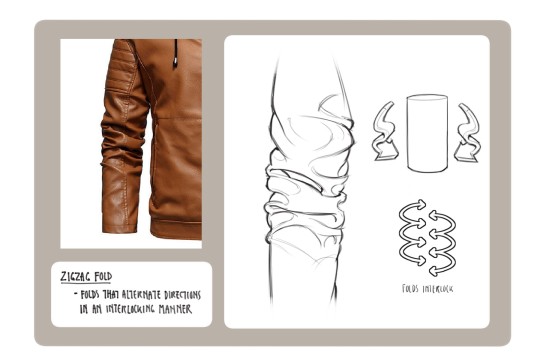
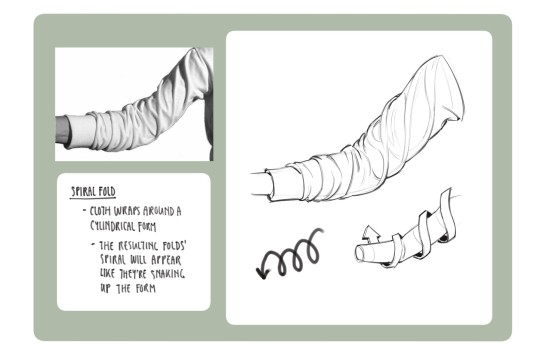
All of this is kind of moot though if it isn't applied through study or observational drawing though
Design:
I have to be really careful here because I don't want to deal in absolutes, the only absolute I'm confident espousing is that anyone who tells you there is only a small selection of methods you should follow to execute a specific type of design are objectively incorrect and just haven't figured out alternative if not more effective design solutions to a common problem. The only real Worst Thing I think you could do as a designer is create a pinterest mannequin devoid of a story, disconnected from its context in the world, and lacking in a clear purpose/personality but this too could be easily be disputed if maximising a character’s aesthetic appeal serves a purpose in its context, and my opposition to this design approach is my personal bias as a character designer for entertainment where emphasizing a character’s function and their relationship to said function is usually the goal
I think the 5 best pieces of advice I've ever received when it comes to designing characters are the following:
Try and follow the rule of thirds/general gestalt design principles of contrast
Always consider what it is you're trying to communicate with the character
Create believable transitions and reinforcements between points of interest
(Entertainment related) KISS principle/Keep It Simple, Stupid is your friend, the way a character wears or wields what they wear or wield will communicate their role in the world (who are they?), their relationship to their role (do they like their job? are they good at it? are they a part of an organization with the means to provide them things to perform their role more effectively?) effectively enough. Excessive information that bloats and conflicts with the communication objective weakens design (example: My favourite childhood toy for years was a pokemon plushie. Would I as a stay at home digital artist be wearing it as a keychain on my crusty paint stained polyester pajama pants when I'm at my desk working my job? is wearing it relevant to my character as a person who both no longer is invested in pokemon and is in this context focused entirely on comfort and doing my job? (no)). I think Elden Ring is an excellent example of a game that has visually complex designs but pretty expedient storytelling with its characters for worldbuilding
Study things that aren't just character design, to borrow from Lynn Yaeger borrowing from Sally Singer "If you're interested in fashion learn everything except fashion... Politics, art, painting- anything except fashion". Because people in different disciplines who work with different mediums or fields of study approach problems in different angles you may not have considered which can help give new ideas + often times the stuff you like was inspired by stuff that isn't at all what you would expect or enjoy yourself (To pull from a very popular example, Arcane is a League of Legends joint which was highly influenced by Warcraft which was highly influenced by Warhammer which was basically a giant response to western pop culture of the 1960s and the history of European warfare something something coconut tree).
Character design is kind of a hard thing to Get Good at considering how much of the actual process is super psychological/not bound by a *ton* of absolutes and has to account for medium and function (you kind of just have to have The Sauce) so I don't recommend Just studying independently only (possible, just very difficult). If you can and are interested in learning more about the specifics take some classes taught by people whose styles you fw who both know what they're doing and are good at explaining their process. For design for entertainment you can always check out Concept Design Academy or The Workshop Academy and see who's teaching there
As far as artist inspirations are concerned I think looking up the artists who worked on projects you like are a good starting point to figure out how you want to stylize. Going off of that at least currently my favourite designers/illustrators for entertainment with The Sauce are probably Evening Monteiro, Sergey Kolesov, Mindy Lee, Tonci Zonjic, Sasha Tudvaseva, Claire Hummel, and Yoshitaka Amano
My favourite book currently for tackling character design at least from a narrative consideration is probably Talking Threads: Costume Design for Entertainment Art (one of the authors is my friend and an excellent teacher!) and a lot of the stuff they espouse really helps to take into consideration individual and external factors when designing a character/how they can be used as vehicles for both individual storytelling and worldbuilding, gigantic reference point for my most recent casual project
Besides that the only other way I can really recommend studying character design is to just look at art, history, architecture, nature (pretty much Everything) and think about how ideas and concepts from those things can be applied to or communicated through a design or figure out what it was about a design or designs you like made it appealing
uhh tldr this is just how i as one among millions of artists got to where i am today as of January 16th 2025 my word is not gospel the advice I espoused here may very well spell my downfall tomorrow
163 notes
·
View notes
Text
My very first oc of signalis... Behold, Swallow!(Even with replika icon)
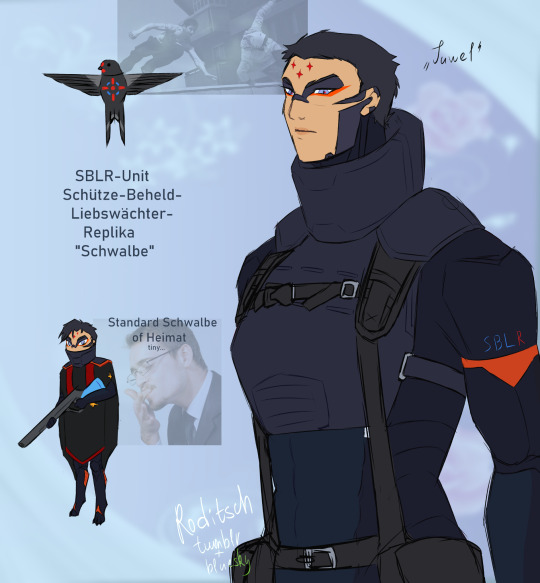
SBLR-Unit, dexterous replika, sharpshooter and bodyguard
200 cm tall
Loyal defenders of the Nation's leaders, these replicas serve for the benefit of the community, their bioresonance module allows them to detect and assassinate enemies of the people long before they attempt to cause discord or feel if their gestalt wards need protection. Their advanced joint design gives them amazing agility, even with heavy armor, they are able to quickly chase traitors of the Nation.
Schwalbe's personality is characterized by high stability, however, a strong trigger factor for personality degradation is long-term work with regular murders, it is noticed that Schwalbe begins to behave more apathetically, and nervous system overloads often occur. To prevent such conditions, they should be sent to "rehabilitation" every few years, where memories of eliminated gestalts are erased or replaced.
In general, the Schwalbe look harsh, but in everyday contact they show peace and even a sense of humor, which they skillfully select for the interlocutor. They prefer board games as fetishes.
In the foreground is Schwalbe Juwel (German: treasure), one of the oldest swallows, who has been escorting the family [space intentionally left blank] on the Rotfront for more than one generation. A mature woman, principled and stubborn

Barn swallows were always my favourite birds since childhood, I admired their elegance and speed in the flight
#signalis oc supremacy#SBLR unit#schwalbe#my art#signalis#signalis fanart#i drawed old women yaoi with Juwel and one of STAR officer#but you are to little for that#just kidding#sooner with show you#short hair is actually fun to draw
37 notes
·
View notes
Text
possible readings of the admech:
1 - admech rituals don't work and aren't necessary. imperium tech largely works based on a combination of dumb luck, ork-esque psychic gestalt fields generated by humanity's collective belief in it, and the efforts of the handful of heretic priests who worked all this out and now do all the imperium's actual IT/maintenance work in secret. The majority of the imperium, and the adeptus mechanics itself, still believe in the rituals wholeheartedly.
2 - admech rituals do work and are (mostly) necessary, but only because they are obfuscations of actual technical work, e.g. the application of sacred oils and incense is just an elaborately ritualized method of getting rusty old machines lubricated regularly, binaric prayers work because they actually contain bundles of voice commands to activate onboard error handling programs in most Dark Age of Technology artifacts, and "machine spirits" are just ancient and ornery onboard AIs that take pity on the occasional tech priest asking for help. This status quo is an unintentional side effect of millenia of collective trial and error; virtually all members of the admech genuinely believe in the cult mechanicus & are unaware there's any material benefit to their rituals.
3 - same as the above, except the admech are (or at least used to be) in on the ruse. The rituals do work, for the above stated reasons, but are deliberately designed to be as mysterious, impenetrable, and terrifying as possible. The people who made them didn't believe in the omnissiah, and sufficiently well-informed members of the admech don't either, often foregoing their rituals entirely when in private or in a pinch. The median admech member understands the basic principles of technology FAR better than they let on, and the cult mechanicus in general exists as part of a massive conspiracy meant to keep humanity at large ignorant, and the control of technology exclusively in admech hands, which they use to their own nefarious ends. This fact used to be common knowledge within the faction itself, however the heresy era split, the subsequent millenia of conflict, and their own overzealous propaganda have all eroded their collective memory. The truth is now only known to its highest ranking and longest-lived members, and is doled out on a need-to-know basis to a select few. This is why most tech priests that feature in the books and video games unironically believe in the omnissiah: they haven't yet been told the truth.
4 - admech rituals do work and are necessary, and the spiritual aspect of it is at least partially true, but this is only because the omnissiah is actually a manifestation of Mag’ladroth the Void Dragon, C'tan god of technology and Aeldari god of oblivion, a shard of which was defeated and imprisoned beneath the surface of mars by the emperor. This shard, either intentionally or unintentionally, influenced and warped the collective psyche of the mechanicum of mars until they became the admech we know today. Their apparent control over technology is the result of some combination of their proximity to the shard giving them aspects of its power, intentional siphoning of the shards power by the mechanicum, the shard itself lending them power as part of a long-term plan to corrupt & use the imperium as a means of revenge against the necrons that shattered it, and the Emperor's defeat of the shard granting him its domain over technology. It's this domain the Emperor won that allowed humanity to expand out and conquer the stars without their tech getting corrupted by the warp, and why technology made by other species and the machines-making-machines-that-make-machines (i.e. the men of iron) fall to the warp faster and more often than human technology
5 - the admech are just batting a thousand and are right about pretty much everything.
#for my personal vote I think 3 is the coolest#but that's probably just becaue I'm a Foundation fanboy and want the admech to become the Church of Science#i think 4 is probably closer to what I'd actually like the answer to be in-canon#while 5 is honestly what I think the most likely answer is given what we've seen in the books#also i didn't come up with the last part of 4 i saw it on reddit and thought it was cool#admech#adeptus mechanicus#warhammer#warhammer 40000#warhammer 40k#wh40k
51 notes
·
View notes
Text

Phoenix Arcanum XIX, The Sun
Divinatory Meaning of this Card
Every day the golden light beams of the sun disperses the darkness of night and the 30th path on the Tree of Life links the sphere of Yod (Splendour-Mercury) with Yesod (Foundation-Moon) from the left hand side to the central pillar. In Tarot symbolism it is known as the “Collective Intelligence” which translates as the sum total of the 12 zodiacal influences, the celestial portents as well as the fixed stars in the science of astrology that represent the total evolution of the human personality through the process of reincarnation. However, astrologically, it also represents Mercury, as spirit or intellect, acting through the sphere of the Sun, as the masculine principle upon the Moon as the feminine principle. The Sun is simultaneously a receiver and transformer of other planetary influences within its own solar system. In this sense therefore, as it is part of the astral triad, it denotes the rigour of the heart or emotions combined with that of the “hidden soul body”. In declaration of the phrase;
“We do not observe the Sun by the light of the Moon,
No, even the Sun is illuminated and perceived by its own radiance.
Similarly, the true self is made real in this world by the eminence of its own light.”
The gestalt image of a face (Resh) or countenance implying that this path is actually an alchemical synthesis of solar and lunar energies, often represented in the subtle body as the alternating, coiling spirals of ida and pingala usually illustrated in the winged symbol of the caduceus carried by the Greek god Hermes. This path or journey is both individual and universal since it embodies and integrates the physical, the intellectual and the emotional aspects of the personality. It suggests working in harmony with other forms of consciousness, the necessary application of the human will or directive, and the recognition in human affairs of the subtle influences of the collective sub-consciousness.
Positive: Union, material happiness acclaim and recognition celebration of friendship or marriage, success in creative endeavours, openness with children. New achievements, growth and liberation from negative forces. Altruism.
Negative: Loneliness, dissolution abnormal relationships, regression inadequacy.
SPHERE: The Collective Intelligence Resh – A Face Astrological: The Sun in Leo, the 5th House. Constellation: Pegasus – The Flying Horse Sacred Gemstone: Tiger’s Eye or Sunstone
49 notes
·
View notes
Note
HELLO i love your stuff so much!!!!! i don’t know if this question is a bit much to ask but i was wondering if you had any advice on composition? a lot of your pieces are sooo sooo cool composition wise and i was curious to know if you have any tips on that kind of stuff
hi thank you!! I don't know how efficient I can be at giving advice on composition, since it's something that I kind of don't really think about, if that makes sense? Maybe it's because I've been doing this long enough where I don't have to actively think about it and it just sort of comes to be subconsciously. ANYWAYS my biggest tip is think about where you want your viewer to look and focus on. Let some of the details of your piece fall back and blend into the background if it's not important. One thing that I find helpful is to not overload the viewer's eyes and make it easy for the viewer to understand, think about the gestalt design principles. All of the small parts of your piece should be able to work together to make one whole piece. So in a way, how good your composition works depends on other aspects like color and so on, they all work together. Breaking down the composition into simple lines and shapes can help you easier see what you're trying to achieve. Is everything balanced or unbalanced? Are there any leading lines that help the viewer's eyes move around the composition? Are there straight or diagonal lines? Is there a rule of thirds/rule of odds? What is the first thing that pops out when you first see the piece at a glance? What is the mood of the piece? Is the framing or are my lines and shapes helping with the mood or doing the opposite? Symmetry, geometric, and straight lines and shapes are often visually read as calm and stagnant. Diagonal lines can indicate movement or unease, alongside unbalanced shapes. I could keep going on about this etc etc. Think about the principles of design
A tip is that people read from left to right, up to down, and are also often drawn to the center when looking at something at a quick glance so think about that when thinking about placement in compositions. I think another thing that people caught up is the accuracy to the real world, whether it'd be with scale, perspective, or detail. But I say do not get caught up in that! It's OK to distort the world for the sake of your composition if you know how to make it work. Obviously you wanna be able to understand how the real world works before you can break the rules, but don't let the rules define you. It goes back to gestalt, that everything in your piece must work together in unison for it all to work out. That was a lot but I hope that at least some of it is helpful ! ALSO LET ME ADD: look at other artsits for inspiration, no one can claim ownership to a composition/framing and you don't get better without looking towards the masters. I'm not saying to straight up copy artists, but do not be afraid to look at other artists for inspiration and reference. Just enough inspiration where it becomes your own thing and not a copy. And I'm not just referring to drawn art, I mean photographers and cinematographers too. Cinematography often goes unnoticed as an art form but it is and there's a lot of thought put into those compositions, and it can be easier to break down and understand how the composition works if it was taken with a camera depicting the real world rather than a drawing interpretation of the real world
#asks#sorry for the very design-y speech im a design student#but these can be applied to any form of visual arts#i could go on and on about this i love talking about art and design
20 notes
·
View notes
Text
So I know there's been plenty of discussion over the decision to turn Tuvix back into Neelix and Tuvok, but has anyone ever considered the ethics of Jadzia demanding back the Curzon memories from Curzon Odo?
Exactly how much of a "person" former Trill host memories are isn't clear—the other former hosts don't seem to care about having their existence be a chain of several hours every few decades—but Curzon Odo was a person, with desires and wants. I kind of think the same principles that make the Tuvix decision hard should apply here as well!
There's an argument, I suppose, that Curzon (implicitly) agreed as part of being a joined Trill to pass on memories to a new person who would not have personal responsibilities to him, and thus he doesn't get to take back the memories*. And Odo was only being lent the memories so he could temporarily host, so he didn't have a right to them either.
Unlike under Janeway, there is neither the argument of practical need for Tuvok and Neelix separately; DS9 is not trapped in the Delta Quadrant, and there is not a pressing need for specific officers. Nor is there the argument that the lives of two people require the sacrifice of one; Jadzia is impoverished by the lack of Curzon's memories but still exists.
But to what extent was Odo-with-Curzon an individual entity with his own rights, separate from the constituent parts? Did he have right of his own? Is he bound by agreements made by the originals? He didn't seem to think of himself as a separate person, the way Tuvix did, but "this person think they're not a person and so doesn't think they deserve human rights" would itself be a Star Trek episode. I think there are questions that at least should be brought up.
'* Given that he drops some surprises to Jadzia in that episode, there is presumably some method by which hosts can keep some memories from being accessed by future hosts. This would allow keeping some secrets that you'd want to take to the grave, or just privacy for some special moments. But "You must pass on the general gestalt of memories to the next host, and give up rights to them" is presumably the general agreement for being a host.
29 notes
·
View notes
Note
Legionspace... it is... difficult for this one to grasp. It should be natural, but it is foreign.
Is it... safe enough to...
Build a bridge through?
This one would see her freinds, look them in the eye, if only through data.
< L4 Ma'ii: Hello again, Styx. Since receiving your message, I've given this a bit of thought.
For your purposes, I think Legionspace is probably a poor option. I think you'll find that an Omninet connection of reasonable bandwidth and an enhanced subjectivity suite, or some other form of neural intermediary, will prove more than sufficient to emulate the experience of physically meeting your friends.
Allow me to explain. >
< I see no reason why Legionspace shouldn't be foreign to you. It's a highly specialized environment, developed for military use. Naval NHPs need intense training and regular drills to gain tactical proficiency in its use. It serves as a naval battleground, designed to consolidate, manage, and direct the digital and cognitive power of entire fleets; a terrible choice for recreation or enjoyment. I wouldn't be surprised if it has been used for such purposes before, but this is far from it was designed to do.
Its primary function is to provide an extremely low latency, high bandwidth medium for transmission of experiences or qualia between NHPs. Such a medium is necessary to support the formation of gestalts, that is, the temporary merging of multiple NHP subjectivities into singular, remarkably powerful intelligences.
Legionspace is not meant for use by humans, except through multiple degrees of ontologic filtering and anthropocentric translation. In fact, direct exposure to Legionspace qualia can easily destroy a human subjectivity. Even experiences transmitted with entirely benign intent may be so incompatible that the human mind suffers the equivalent of a system crash on attempting to process them.
So, then, unless you're interested in merging with your friends or directly interfacing with each others' minds, use of Legionspace shouldn't be necessary. Moreover, if there are any humans you wish to meet, it may be a challenge to maintain the necessary ontologic filtering. Even with these safety measures in place, a human may find prolonged Legionspace interaction to be...draining.
An easier, more accessible solution would be a somatosensory uplink, achievable through the use of a standard enhanced subjectivity suite. Rather than directly bridging one mind to another, this process involves the use of a neural intermediary to temporarily replace the physical body with a virtual one; an avatar. In the case of humans, sensory information from the body is intercepted and replaced with computer-generated stimuli, and outgoing impulses from the brain are translated into controls for a virtual avatar.
Much of the technology was pioneered by SSC, and is used as one mode of accessing the company's virtual-reality Omninet campuses. If you've heard of full subjectivity sync cybernetics, they are an extension of the same principles, used by mech pilots to control their chassis as a human would control their own body.
It is a mature technology which has undergone a great deal of refinement, but there are still risks, especially where humans are concerned. For them, shifting to an unfamiliar body can be unpleasant, sometimes traumatic. They can, but not always, experience dysphoria, disorientation, nausea, dissociative symptoms, a variety of side effects. In cases where the simulated body is notably different from a humanoid one, the subjectivity may reject or recognize the unreality of the substitute body, leading to extreme distress.
On the other hand, as I understand it, exploration of alternate forms can also be a liberating, enjoyable experience. The level of comfort varies from human to human. Some are able to tolerate very unfamiliar experiences, while others find themselves unable to use somatosensory uplinking at all. For most of our kind, of course, changing from one body to another is as simple as switching input sources. While the architecture of the human brain is not naturally constructed to accommodate body replacement, we lack such impediments.
Come to think of it, Hachiko recently had reason to research this topic. We know a human mech pilot, Sokaris Kelsius, callsign Opossum ( @the-last-patch ). He was badly injured in the course of combat; we went to aid him. In the course of treating his wounds, Hachiko used his full subjectivity sync cybernetics to establish somatosensory uplink, both to facilitate communication and provide pain relief. To do so, she rapidly constructed an avatar for him which initially failed to match with his physical body. This initially led to some dysphoric symptoms, but after some refinement of the avatar, he was able to use it seamlessly to communicate with us through our own avatars.
I bring this up because I am aware of the somewhat unique relationship you have to your own organic body. This is a factor which does not exist for most NHPs. Should you decide to pursue the use of somatosensory uplinking, I could forsee some obstacles associated with the relationship between your casket and body.
All of this might necessitate surgical implantation of a neural intermediary between your nervous system and casket, similarly to how a human would have an enhanced subjectivity suite installed between body and brain. I know that your nervous system does not support suspension or alteration of input delivered to the casket--perhaps such an implant might be beneficial in other regards, as well.
As for the other end of the equation, the avatar, if might be best to use an avatar which closely matches your physical body to avoid potentially unpleasant experiences.
Still, compared to the prospect of using Legionspace, this may be safer and simpler to achieve, and the outcomes more enjoyable. Access to Legion bridging cybernetics and Omninet connection of sufficient bandwidth to make use of them is generally restricted to military or corporate forces. It is possible, and can be used safely, but the resources required may be difficult to procure.
One other note: if you ever wish to wish to visit us, you are more than welcome. The simulated environment we use as our home is a hybridized Legion-adjacent environment; it can support qualic transfer, but in general, we typically use physical simulations to interact with one another. This conserves processing power, and to be completely frank, pure Legionspace is an environment we associate with some very unpleasant memories.
I wish you luck, Styx. Let me know if I can help. >
#lancer rpg#lancer rp#lancer nhp#lancer oc#oc rp blog#styx-class-nhp#ooc: had to crack open Legionnaire and check on a few things for this one#ooc: the somatosensory replacement stuff is mostly me extrapolating on SSC tech btw - not canon just spitballing#ooc: woe wall of text be upon ye
18 notes
·
View notes
Text
Texts in Like Minds: Sally's Books

After her first encounter with Alex, Sally returns home and consults a stack of books while listening to the recording of their discussion. Of this stack, only two titles are discernible. The first book is shown briefly and set aside, and the second is opened to a bookmarked page. This large tome is titled Principles of Criminal Psychology (Fifth Edition), by George R. Booth and Andrew Porter. Sadly, I cannot find even the tiniest scrap of the existence of this book online. It is clearly a textbook, and presumably one she would have kept from her school days given that it’s directly relevant to her career. The bookmarked page is titled “Chapter 27: Gestalt Theory”, and the opposite page features photos of Leopold and Loeb, who I have discussed elsewhere. The text itself is unfortunately not clear enough to be readable.


Returning to the first book we see, there is much more information to be found online. It is titled Gestalt Therapy: The Attitude and Practice of an Atheoretical Experientialism by Claudio Naranjo, first published in 1993.

The recording Sally plays during this moment is their exchange regarding gestalt. This concept is one that the movie highlights in this scene and again at the end during Sally’s address to her peers, but it does not clearly define or explain the idea of “gestalt” for the audience. Gestalt first arose as a philosophical principle suggesting that the experience of the parts of something cannot fully represent the whole of that thing, like the notes of the song versus the experience of the song itself. A cursory search of various articles online can give a brief overview of the core ideas of gestalt psychology. Wikipedia says this:
Gestalt psychologists believed that breaking psychological phenomena down into smaller parts would not lead to understanding psychology. Instead, they viewed psychological phenomena as organized, structured wholes. They argued that the psychological "whole" has priority and that the "parts" are defined by the structure of the whole, rather than the other way round. Gestalt theories of perception are based on human nature being inclined to understand objects as an entire structure rather than the sum of its parts.
This gives us a more thorough explanation of Alex’s very brief description of “gestalt”, but does not provide much insight into the meaning of his hints to Sally or why gestalt would have any bearing on his relationship with Nigel. The implication we are left to surmise is that these two separate boys have combined as individuals to create a whole greater than the sum of its parts, and Sally lampshades this idea at the end in her speech referencing the movie title. However, examination of these two books has given me some new thoughts about the use of gestalt in the film and about Sally’s conclusion regarding the dynamic between them.

Alex’s next words to Sally feel extremely significant and should be considered thoroughly: “It’s not what it is. It’s how you use it.” Given that both these books reference “gestalt therapy” specifically, it’s worth looking beyond the core theory of gestalt psychology to see how therapists actually use these ideas in practice. I found a clear explanation on this page:
Gestalt therapy is an existential and experiential psychotherapy that focuses on the individual's experience in the present moment, the therapist-client relationship, the environmental and social contexts in which these things take place, and the self-regulating adjustments people make as a result of the overall situation. It emphasizes personal responsibility. Gestalt therapy was co-founded by Fritz Perls, Laura Perls and Paul Goodman in the 1940s–1950s.
Gestalt therapy is built around two central ideas: that the most helpful focus of psychology is the experiential present moment and that everyone is caught in webs of relationships; thus, it is only possible to know ourselves against the background of our relation to other things.
I think we can already see some connections with the story as Alex presents it. Alex and Nigel are inextricably entwined in a web of relationship, and we the audience find it impossible to understand either character outside of this context.
Here I would like to suggest some Doylian interpretation which I believe to be possible or even likely, but for which I can offer no concrete evidence. We know that Greg Read initially intended to make a documentary about the phenomenon of two people who match each other’s freak so well that they enable a worsening of sociopathic tendencies to the level of violent criminal behavior. In one interview, he referenced a paper he read about gestalt psychology which opened doors in his mind and led him down this path. He had developed the documentary idea enough to show it to other people, and someone told him it would make a great fictional movie. Based on this, I assume he must have acquired additional materials beyond that first paper, conducting extensive research on the idea in preparation for the documentary. I posit that the books Sally uses in this scene are Greg’s books, or copies of the same books he had referenced. All of Sally’s scenes were filmed in Australia, so it’s not outside the realm of possibility that he simply brought (or already had) his own books on set.
Working from that assumption, the ideas found in Gestalt Therapy: The Attitude and Practice of an Atheoretical Experientialism might be taken as extremely influential on Greg’s thought process in writing this film. While the whole text is not available online, there are a few excerpts one can read for free here. (The book itself is available through multiple websites for around US$40 at the time of this post.) If we examine the excerpts below within the context of the movie, a few things really stand out (emphasis mine):
Perls sometimes stated the principle entailed in such strategy as one of absolute validity: You never overcome anything by resisting it. You only can overcome anything by going deeper into it. If you are spiteful, be more spiteful. If you are performing, increase the performance. Whatever it is, if you go deeply enough into it, then it will disappear; it will be assimilated. Any resistance is not good. You have to go full into it—swing with it. Swing with your pain, your restlessness, whatever is there. Use your spite. Use your environment. Use all that you fight and disown.
This sounds remarkably like the process Alex goes through with Nigel, resistant at first and gradually leaning into the swing, learning to embrace and roll with all the things he was fighting against. A case might also be made that Nigel partakes in this process as well: he too is resistant to Alex initially, but the train scene marks a turning point in which he seems to make the decision to lean into the violence that Alex offers.

Returning to Alex’s assertion that it’s not about what gestalt is, but how you use it, these passages take on a whole new meaning. Sally’s speech at the end of the movie suggests that she arrived at the conclusion, based on her belief in Alex’s version of events, that Nigel essentially used the techniques of gestalt therapy in a twisted, malicious way to manipulate Alex towards the culmination of the film. As she says,
“What follows, through a system of either intimidation, manipulation, or coercion, is the dominant individual begins to focus and influence the thoughts of the subordinate partner. This process nurtures a subjective gestalt where similar thoughts, fantasies, and other interlocking elements conspire to form a greater and more volatile whole, therefore, a merging of like minds.”
Now read the excerpt below in light of these descriptions:
In the strategy which pervades Gestalt practice, the therapist is leading the patient through a process similar to that through which a child that is learning to sit on a chair needs to discover that he can sit only by giving his back to the chair, not by moving towards it. While this is a discovery that many make at a certain point in a typical session, a spectator may not share the insight. The patient discovers that his resentment was a diluted and devious form of healthy aggression, for instance, but this spectator may be frightened by what he sees as destructive loss of control; what the patient experiences as a rewarding and cleansing explosion of grief, brought about by the exaggeration of emptiness, the observer without familiarity with Gestalt may fear that the therapist, by urging on the patient’s symptoms, may lead him to suicide. The therapist’s ability to bring a patient to the turning point where his disowned destructive energies become his own purified strength will depend, in large measure, not upon technique alone, but on his experiential knowledge that this is possible, and in the consequent sense of trust in the constructive drives of which pathological manifestations are a distortion brought about by unhealthy denial and which can heal by itself in the presence of awareness. Such trust will enable him to pursue a given course of action to an effective degree, in spite of the patient’s chaos, rage, or loss of control—and will be important, too, in eliciting the necessary trust in the patient for him to let go. Gestalt therapy is based on the principle that to alleviate unresolved negative feelings like anger, pain, anxiety, and resentment, those emotions cannot just be discussed, but must be actively expressed in the present. Without that, psychological and physical symptoms can arise.
These passages represent the intended healthy expression of these principles. If we take these ideas and techniques and twist them into an unhealthy, intentionally manipulative and toxic dynamic, it maps quite clearly onto the relationship between Alex and Nigel and the actions they take throughout the film. Sally assumes that Nigel is in the role of the “therapist” leading Alex the patient through this process. The movie’s ending presents itself as a twist and suggests that these roles were in fact reversed, particularly in light of Alex’s first interview with Sally and his ominous and vague statements about Nigel's death being a necessary means to an end. If we accept that conclusion at face value, then consider how Alex “urging on the patient’s symptoms” may have actually “led him to suicide”.
The Gestalt therapist contrives experiments that lead the client to greater awareness and fuller experience of his/her possibilities. Experiments can be focused on undoing projections or retroflections. They can work to help the client with closure of unfinished Gestalts ("unfinished business" such as unexpressed emotions towards somebody in the client's life).
What is the climax of this movie if not Nigel creating a violent type of closure with his unexpressed emotions toward his parents? “It’s how you use it.” Did Alex use gestalt therapy techniques to draw Nigel into this violent chain of events as “a means to an end”? If so, what actually was the “end” he desired?

Incorporating this information into our interpretations of the movie still does not necessarily force us into accepting Alex as Mastermind as the only reading. I think you can certainly see that dynamic, but it doesn’t preclude Nigel as Mastermind. In my further reading regarding gestalt therapy, I found this passage in a blog post:
A thirst for experience is part of all life. Often though, this takes the form of a wanting to move on and on to other experiences than those at hand. A craving for more replaces the need for depth that could be our natural mode of contacting the world, had we not become desensitized to it. Intuitively seeking that depth or fullness of awareness that is on our birthright, and not finding it, we seek the substitute of environmental stimulation: spicy foods, rock climbing, high-speed sportscars, competitive games, tragedies on the movie screen.
This describes Alex perfectly and speaks to his own need for the gestalt therapeutic approach. We could argue that Nigel addresses this drive for more experiences by bringing Alex into a focus on the depths of the present moment, existing in the now that Nigel creates for him as he attempts to understand his own feelings and reactions. As the book puts it:
The Perlses believed that it is not our responsibility to live up to others' expectations, nor should we expect others to live up to ours. In building self-awareness, gestalt therapy aims to help clients better understand themselves and how the choices they make affect their health and their relationships.
My own interpretation is one of equal partners both playing the role of therapist and patient to each other. Gestalt therapy relies on the ability of the therapist to set aside their own interpretations of the patient's experiences in favor of allowing or guiding the patient to arrive at their own understandings and conclusions. I do not think that sole responsibility can be placed on either Nigel or Alex, and the events of the movie could not or would not have transpired without the active participation of both boys in each other's lives. While the context is a dark expression of these ideas, both Alex and Nigel help each other build self-awareness and achieve a better understanding of themselves.

Like Minds Masterpost
#i just had to put that shot of Sally at the end because she's so absolutely gutted at her own failure - i'm so mean#greg really did say what if two guys matched each other's freak#like minds#nigel colbie#alex forbes#nigel colbie x alex forbes#tom sturridge#eddie redmayne#murderous intent#like minds 2006#like minds analysis#murder boyfriends
42 notes
·
View notes
Note
did you go to school for UI/UX design? i've always been interested but i'm not sure where to begin to learn
actually i'm a high school dropout and never really went to school for anything i'm good at—everything i know i learned because i was interested in it from a young age so i naturally sought it out.
i mostly spend a lot of time observing little details in things (software, game design, ui design, whatever really) and asking myself why a particular choice or compromise was made.
important to note that ui/ux design is not strictly about looks, it's about behavior and usability. there's a lot of human psychology and philosphy involved so i suggest looking into that as well!
here's a bunch of resources that taught me a lot, consider these like a solid jumping off point:
gestalt principles
laws of ux
apple's 2017 "designing fluid interfaces" wwdc talk
"the first secret of great design" (ted talk)
the design of everyday things (book)
the art of screenshake (this talk is about "juice" in games but can apply to almost anything)
remember that talent is simply pursued interest
11 notes
·
View notes
Text
I stan this idea very much
Warming. Contains info hazardous bias.
--
The beast of instinct.
It is a class of design concepts in my delusion magic system, in the bronze age world. There have been a lot of these beasts in this time period, that's just an excuse to slowly introduce the concept and therefore slowly brainwash readers to like my ideas, the magic of Mystique...
tl;dr of the Delusion magic system is that all ideas in your head, that have no contradiction in your entire neural circuitry... Are made manifest. The only limit of abilities is that no one here can violate the conservation of information.
The beast of instinct serves as an equal to its opposite concept in the magic system, to the various demons of reason.
--
When an intelligent creature is rid of delusion. It's inefficient neural pathways that sustain its own narrative is burned away... in order to perfect its sensory input to the motor reaction output loop...
That is the beast of instinct. A creature of pure emergent function of their respective chain of chemical reactions that sustain them. Just biology. Nothing 'alive' in it...
The beast of instinct is actually an evolution line from the 'artsy' type of poke- ahem... characters... Because all their senses converge into one level of Gestalt like act of observation...
They have reduced their craft to mere hardwired instinct. Art without interpretation. Art is in the interpretation, they cannot hold higher thought. There is no interpretation. Distilled objective sensory observation.
This act of observation and reaction loop causes neural synergy. Their movement becomes choreographed, a dance set on the rhythm of information continuity... a markov chain stitching its path only in eternal now
Think of it like your body moving in a deep flow state... You don't need to justify any action, there is no action, you just are... imagine how flight or flight works.
--
Their nervous system become more hardwired, the input signal moves to the Permutations of nerve cells that lead to motor output. No lag, no higher processing that can take them out of their contradiction free observation of reality.
--
What do they do!!!???
Well, I have some examples...
--
There was a wild 'notorious' tiger that had perfected its art, the hunt.
THE SHADOW.
Its targets could never track it while simultaneously recognising the contours of its shape, 'camouflaged'. Heisenberg's Uncertainty Principle flavoured.
Basically if you see it still? then it has already left the field of your active vision... And if it is tried to track? Its patterns become 'blurrier'
Scary camouflaged danger cat be real sneaky!
--
Another is, hehe boi, this shit is why I do all these
THE DEAD MAN WALKING
A malevolent bag of matter and energy performing emergent behaviour.
It's a he... I am sorry... it is an unorthodox villain character so it's fine. He 'bad boy' hot!! ... Atleast ...
This being has burned away everything. All neural pathways that are deemed inefficient.
In transcendental rage... (revenge subplot but the spicier version, powerless human on a quest for revenge, and in his hit list are some protagonists... and he's Machiavellian but unga bunga version. Bronze age min maxed sweaty ape ass.) His body has burned everything away inside it that could stop itself anymore... it began with the symptoms of never stopping, even though he's clearly spent... and the ones on his hit list are sometimes delusion magic wielders... and his condition is kinda okay but still bad... even chemically resource starved sometimes...
Think of this man moving like a Fourier transform of the music this man runs on
Or better think of it like the collapsing wave function. Its curvature flowing, being dictated as observed by objective reality.
An animated squiggly line. Extrapolate that squiggly line to 3 dimensions and you can see my boi animate in every frame of the causal reality he observe... Its slow... It's only biological ofcourse... Give it some time... Speed up the animation frame rate to our scale bruh!
++
Retrograde amnesia, Anterograde amnesia, aphantasia, there is simply nothing left in this man that can hold higher thought. Not even recognition of its own geodesical individuality. There is no separation of 'me' from the larger universe in him left.
It has all been burned away.
A martial indifference walking in perfected malevolent instinct.
++
Much like Clive Wearing, a real dude! Look him up!
Music allowed Clive to stitch his distorted continuity for a suprising good length... Otherwise, he couldn't recall his memories and cannot make new memories... long term and short term memory loss.
That is because of the 'Musicality' of our systems, a very well oiled part of circuitry in your cranium, the thing that creates meaning from pattern-ed sequence of sound... is so connected with out voluntary motor functions that we can't help but vibe. Fact! the taping of your feet!? That vibe? Craving for Chris Christodoulo synthwave? it's hardcoded!!
And Clive was a brilliant musician!! so the music part of his neural circuitry was still going good!!
Continuity in motor function? Better sense continuity of reality! All because Music moves us... quite literally.
++
Copy that shit one to one shamelessly, exaggerate, and slap it to the Dead Man Walking. Add some more too.
Aphantasia so he can't voluntarily simulate shapes in his prefrontal cortex.
Synesthesia because his reduced neural circuitry sustains the seamless sensory information convergence into a Musicality led rhythm. We all have it, it's just not required and therefore it's unique neural paths are not strengthened (unless you do have Synesthesia, in its numerous variations, my boi here has the complete one... Brain less fibry dense as normal? Remaining fibers circuitry are taken as new normal, strengthened and are then is more 'hardwired')
Since normal symbolic context driven language is not possible for its mind... Think of the music as a language his circuitry runs on... that labels all levels of raw sensory information in one neat, low mental level, yet surprisingly rational, compressed packet...
And this Musicality stitched rhythm is what keeps it in this continuity of the eternal now. A malevolent algorithm, an else-if ladder.
++
Its shitty 'machete on a good stick' glaive is a sight to behold. Not for it's crude, flavorless... Yet surprisingly ergonomic?!... Makeshift design... That is... Only if your body has a similarly chiseled epigenetic expression to his...
Its path never meets resistance. Eviceration itself left behind its tail wind. Not because its blade end is impossibly sharp, or is a 1024 times folded katana... but because its path is never allowed to meet a material that could resist its cleave... (Maybe the blade end is a 'foraged' Damascus made, short fat, Ramdao... It is in fact from the harappa side of things)
Only after he has completely 'understands' what it is fighting... is. and 'is' as in objective reality... think of it like him starting from the 0 of understanding of hiss opponent's unique induviduality... all potential behaviour and bias in shape and permutation of material... It takes time... Maybe less every other opponent that makes him reach the weapon's full 100% smooth path...
The crude weapon's sheer girth is used to balance his borderline animated smooth wonky posture... Imagine he pushes the waxy stick blade first forward while in air... It's mass and acceleration pulling his surprisingly light body, for a surprising amount of centimetes in that direction... Oh and he's also is on a very strict... very Surprisingly varied, forager diet... Only take enough resources that are recognised to 'continue efficient function' type diet... Unga bunga variant.
Shit like this happens with many different weapon flavours since he gets bland fast...
His fighting style is anything that works as long as he is the one who survives in the end. Getting better and better to the point if there is even a fraction of a chance a human of his build and calibre can win... He wins and his opponent mostly dies... Getting more efficient with each iteration of causal action, that is the speed cap of his limit.
++
The events that lead this man to this pokevolution are truly some edgy sad offscreen dark souls lore... and anime ass hell fights!
His art is the art of malevolent survival. Sad artist stuff I know...
He actually is made to go even lower from this state of being a beast of instinct... That's a secret for now!
--
Wait a minute!
If a beast of instinct runs on a sense of self expression put in continuity of motion, in reaction to obervation of objective reality... Basically doing Art without interpretation...
Does that mean art is a true emergent behaviour of the universe? Not just something one does in their cranium... Not just in their subjective simulated reality in their prefrontal cortex...
Since the nature of the beast is reduced to mere biology functioning... And biology is already a true emergent property... Duh
So is art... Real?
I mean this in terms of functioning, labeled as art... And functioning is real...
That matters more to my narrative in retrospective... because I have a concept of 'true lies' somewhere in the story...
#original character#magic system#character concept#oc#character design#Chris Christodoulo#music#musicality#algorithm#emergent behavior#gestalt
6 notes
·
View notes